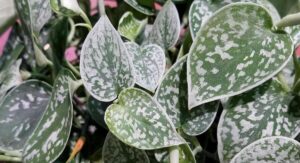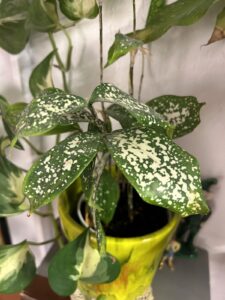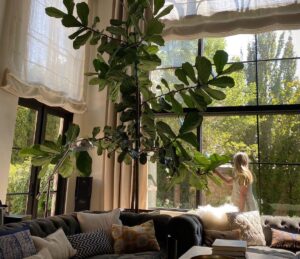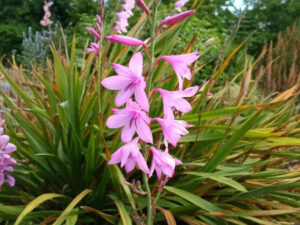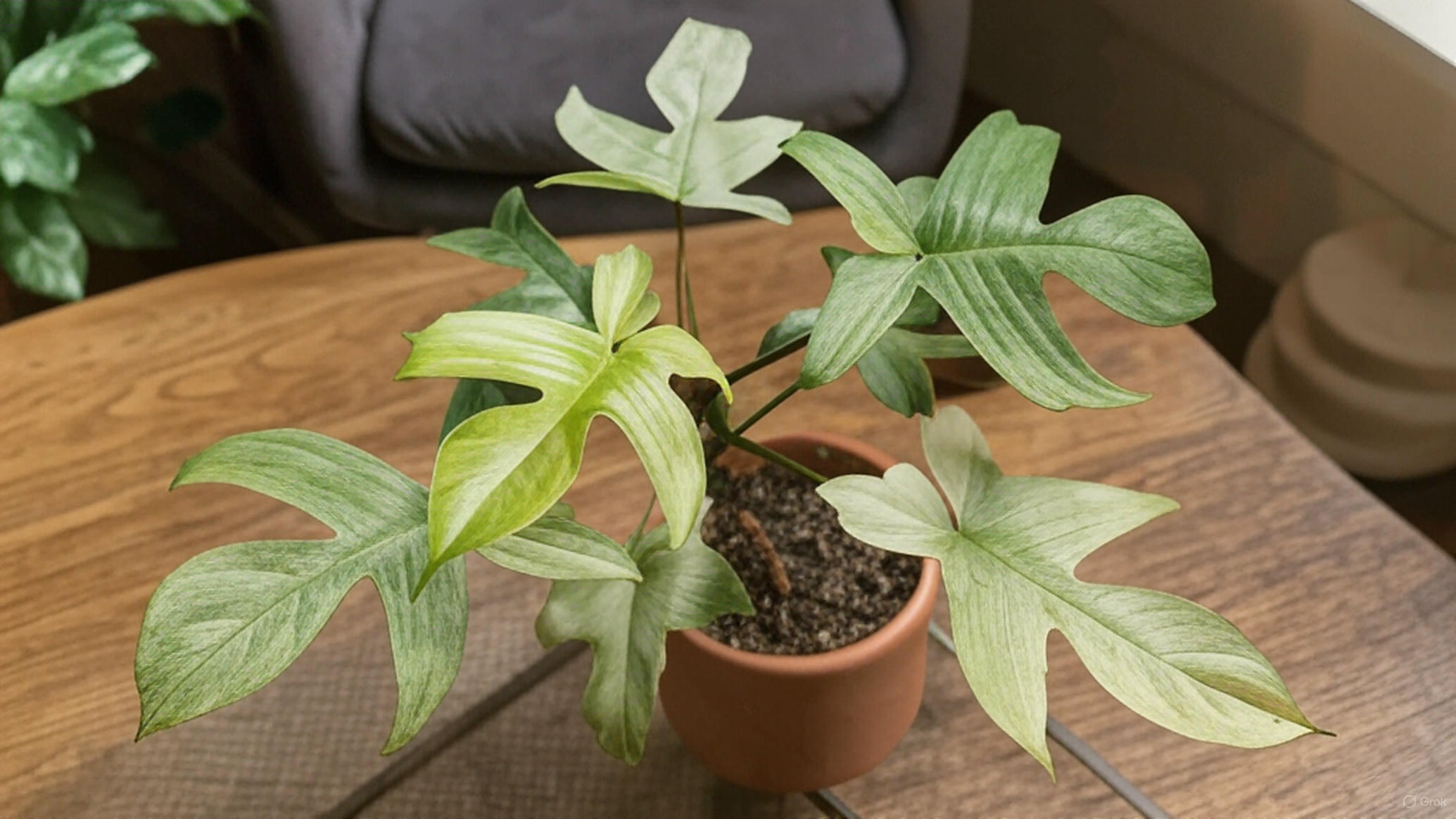
Philodendron ‘Florida Ghost’ is a striking tropical plant known for its unique white and green variegated leaves that emerge from a bright green hue. Native to the lush rainforests of South America, this hybrid philodendron adds a touch of exotic elegance to any indoor space. With its relatively low maintenance requirements, it is a favorite among both new and experienced gardeners.
| Common Name | Florida Ghost |
|---|---|
| Botanical Name | Philodendron ‘Florida Ghost’ |
| Family | Araceae |
| Plant Type | Perennial |
| Mature Size | 2-3 feet tall |
| Sun Exposure | Bright, indirect light |
| Soil Type | Well-draining potting mix |
| Soil pH | Acidic to neutral |
| Bloom Time | Rarely blooms indoors |
| Flower Color | Greenish-white |
| Hardiness Zones | 9-11 (USDA) |
| Native Area | South America |
| Toxicity | Toxic to humans and pets |
RELATED: My Top 11 Dream Houseplants
In this article
Philodendron ‘Florida Ghost’ Care
Philodendron ‘Florida Ghost’ is relatively easy to care for and adapts well to indoor life, making it an excellent choice for those looking to add a pop of greenery without excessive upkeep.
Light
This philodendron prefers bright, indirect light to maintain its vibrant variegation. Avoid direct sunlight, as it can scorch the leaves and diminish their striking colors.
Water
Water your Philodendron ‘Florida Ghost’ when the top inch of soil feels dry. Be cautious not to overwater, as this can lead to root rot. Ensure that the pot has adequate drainage to prevent standing water.
Soil
A well-draining potting mix is ideal for this plant. A mixture formulated for aroids or a combination of potting soil, perlite, and orchid bark will work well, providing the necessary drainage and aeration.
Temperature and Humidity
Philodendron ‘Florida Ghost’ thrives in temperatures ranging from 65°F to 80°F. It enjoys higher humidity levels, so consider using a humidity tray or placing the pot in a more humid environment like a bathroom or kitchen.
Fertilizer
During the growing season in spring and summer, feed your plant with a balanced liquid fertilizer every 4-6 weeks. Reduce feeding during the fall and winter months when growth slows.
Pruning
Regularly check for any yellow or dead leaves and trim them away to maintain a tidy appearance. Pruning helps promote better air circulation and encourages new growth.
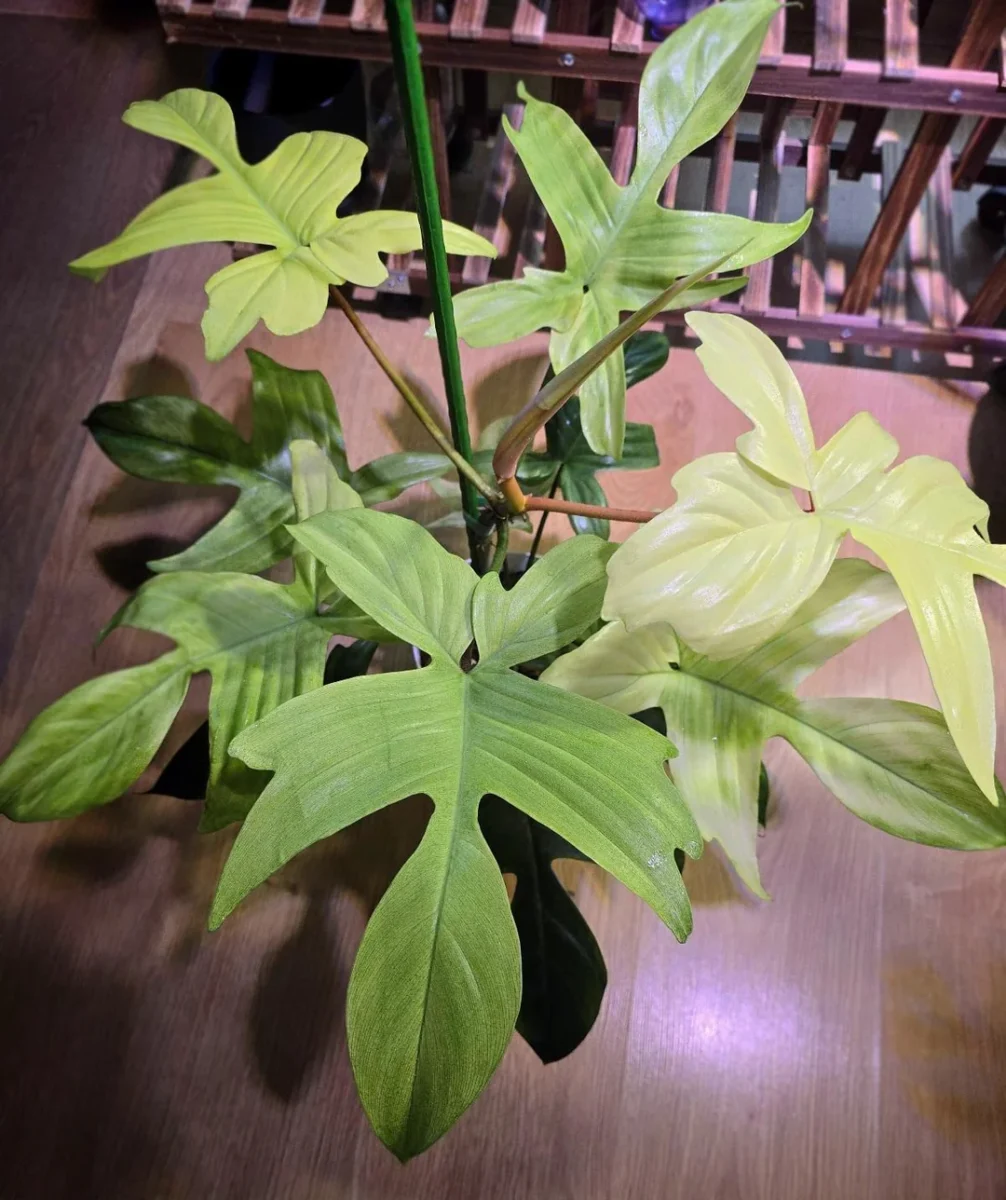
Propagating Philodendron ‘Florida Ghost’
Propagation can be done through stem cuttings or by division. Here’s how to propagate:
- Take a healthy cutting with at least one node and a few leaves.
- Place the cutting in water or directly in moist potting mix.
- If using water, change it regularly to keep it fresh until roots develop.
- Once roots are well-established, transplant the cutting into a pot.
Potting and Repotting
Choose a pot with drainage holes to prevent excess moisture. Philodendron ‘Florida Ghost’ will need repotting every couple of years or when it becomes root-bound. Use fresh potting mix during repotting to provide nutrients.
Overwintering
This plant should be kept indoors during colder months. Ensure it remains in a warm location with bright, indirect light, and water less frequently as growth slows.
Common Pests and Plant Diseases
While generally resistant to pests, Philodendron ‘Florida Ghost’ can occasionally attract spider mites, aphids, and mealybugs. Treat any infestations promptly with insecticidal soap or neem oil. Be mindful of root rot caused by overwatering.
Common Problems with Philodendron ‘Florida Ghost’
If leaves start to turn yellow or drop, it may indicate overwatering or insufficient light. Adjust your care routine based on the plant’s needs.
Frequently asked questions
Is Philodendron ‘Florida Ghost’ pet-friendly?
This plant is toxic to both humans and pets if ingested, so it’s best to keep it out of reach of curious animals and children.
How fast does Philodendron ‘Florida Ghost’ grow?
Growth rates may vary, but with proper care, you can expect moderate growth throughout the growing season.
Does Philodendron ‘Florida Ghost’ thrive in low light?
While it can tolerate low light, the vibrant variegation will diminish. It’s best to provide bright, indirect light for optimal growth.
READ MORE:
